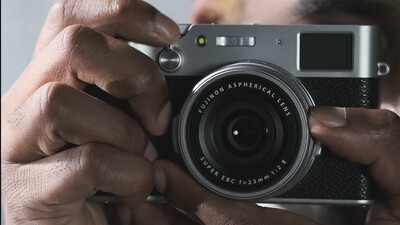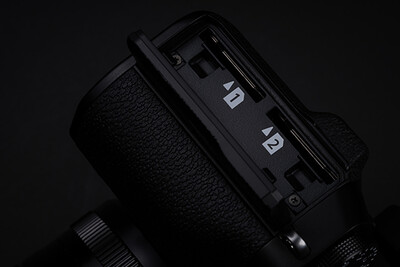1. IBIS or optical image stabilistion
One major flaw that holds the Fujifilm X100V back from being the perfect compact travel, street, and landscape camera is its lack of in-body image stabilisation (IBIS). Rumours that the Fujifilm X100VI will have IBIS seem to have been summarily dismissed by the likes of FujiRumors, but these are leaks, and we all know how reliable those can be.
That said, Fujifilm's reliance on packaging and aesthetics to sell the same camera hardware to different markets somewhat supports the idea that the X100VI will skip IBIS this generation. Historically, the only Fujifilm cameras to have IBIS have belonged to GFX cameras from the medium-format lineup and the video-orientated X-S and flagship X-H and X-T cameras.
Perhaps Fujifilm's rangefinder-style cameras are due for an image-stabilised addition to the pack, since it would greatly expand the scope of use for cameras like the X100V. This is especially necessary for the X100VI, since it cannot make use of stabilised interchangeable lenses to achieve the same effect, like the X-Pro and X-E cameras can.
2. Built-in variable ND filter
One of the Fujifilm X100V's best features is the built-in neutral density filter, which allows you to shoot with wider apertures in harsher conditions. A variable ND filter, like the one available in Sony's FX6 camera, would add a lot of flexibility to the feature.
The ND filter in the X100V darkens things by four stops, which was already an improvement over the three-stop ND filter in the X100F. Moving to a variable ND filter could let photographers lighten their kit, even further than the X100V allows for. This likely isn't at the top of anyone's X100VI wishlist, though, since you can fairly easily compensate for brighter scenes with a faster shutter speed in most cases.
3. 4K 60 fps video (and better video in general)
Fujifilm usually updates at least the sensor or processor with each camera generation, which basically means that we're guaranteed to see similar video features as those found in the Fujifilm X-S20 (curr. $1,299 on Amazon). Those features include 10-bit 4K internal video recording at up to 60 fps, with 6.2K open-gate also a possibility, depending on what sensor Fujifilm decides to use for the X100VI.
Unfortunately, open-gate 6.2K recording seems unlikely, given rumours that the X100VI will get the X-T5's 40 MP X-Trans 5 CMOS sensor, as opposed to the X-S20's older 26 MP X-Trans CMOS 4. Nevertheless, the updated sensor and X-Processor 5 should open the doors to many upgrades that could make the X100VI a potent hybrid and video camera, despite its fixed lens. At the very least, the X100VI should get 4K 60 fps video recording and 10-bit 4:2:2 capture, like most of the modern Fujifilm X-series cameras.
4. Dual SD card slots with UHS-II support
Given how many professional photographers are enjoying the Fujifilm X100V (curr. $1,899.95 on Amazon) these days, it only makes sense to offer the X100VI with dual SD card slots and improved card write speeds — if not for speed, for redundancy and simplicity. Dual card slots, with the ability to put in-camera JPEGs on one and RAW images on the other, might go a long way towards simplifying workflows.
Once again, this is a feature that Fujifilm has left for its more “professional” cameras, meaning X100 users will likely be left out in the cold once more. It also seems unlikely that the X100VI could get dual card slots without significantly increasing the camera's size and cost, which would diminish the compact camera's allure.



















